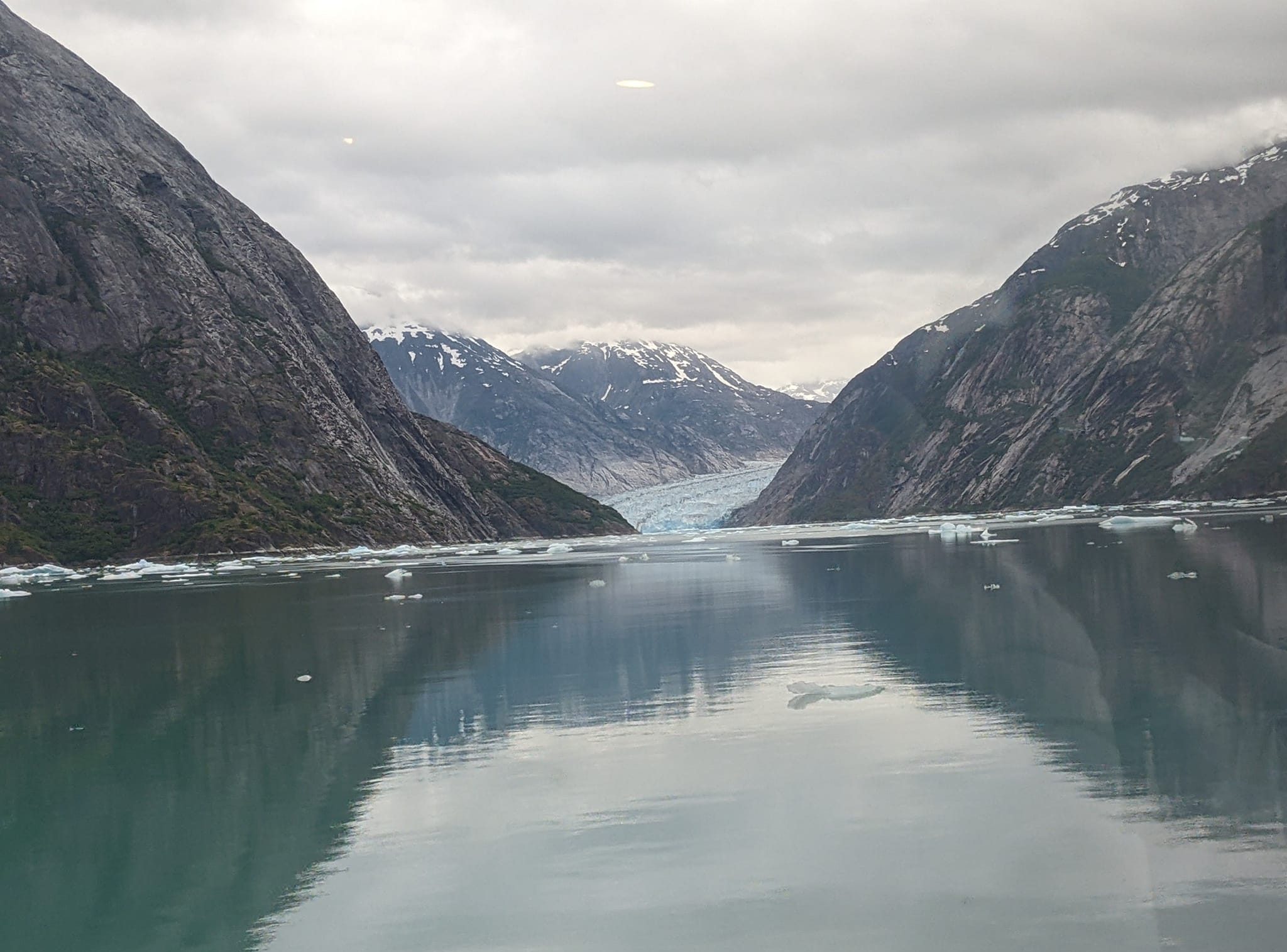Guide to Planning Our Big, Crazy, Go-Go-Go Trips
There are at least three kinds of trip: visiting friends or family, simply relaxing and the go-go-go kind where you fit as much as you can in. I like all of them, with the first and latter ones being my favorite and normal ones. Because of my personality, simply relaxing is really hard for me. Even on a cruise where I was unplugging from work and life, I set a goal for myself to complete one of my audiobooks before the seven-day cruise was complete. I finished it the last night of the cruise, yeeeaaahhh!! It drives my hubby Joe crazy that I have to constantly be productive and busy, but it drives me crazy to just “hang out” for too long. Anyhow, I digress. Let’s jump into how I plan the go-go-go trips because it is obviously the one that takes the most planning.
1. Getting started…
One of the first things I do in planning any trip that is not just a “relaxation” trip is creating a Google sheet (so it can be shared with others going and I do not have to remember details later, they are already recorded for future viewing); it is essentially just an excel workbook online. It is not formatted pretty-like, it is a true working document, and it usually includes columns such as sites to visit or activity, location, URL, visit date, recommended time to spend and cost. It may vary from trip to trip depending on some of the important features and time frames.

Next, I start listing the big-ticket items. You know, the things that I do not want to miss no matter what (Mount Rushmore, the town of Annecy, Mayan ruins, etc). I often will visit TripAdvisor, various Facebook travel groups and regular Bing searches to find more information on the best time to visit the locations, costs, discounts available, recommended time to spend at the site and how to get there, just to name a few of my top column items. I start to organize them by routes. While I like to use Google Maps to get a general idea of distance between and travel time for initial planning, I like to use a map site called MapCustomizer.com to plot out points by location so I can see my route laid out visually. This site does not limit how many plots you put on your map like Google or Bing Maps.
Once I have my non-negotiable items listed out, I visit the websites and travel groups to find activities and places to visit that are not always on everyone else’s top tourist destinations, the kind of things that are off the beaten path (Child Eater statue in Bern being an example and the whole reason we stopped in Bern). I list out all of the ones I think may be of interest to not only myself but to my travel pals. I include the link to the attraction on my Google sheet so it can be easily viewed. I do not limit the number of attractions I list at this point. I do not start narrowing down the possibilities until I have a full list of all things amazing.
2. Planning:
Once I have exhausted the main websites, I ask my travel pals to review and let me know their non-negotiables and things they can take or leave. It is important for them to pick out the must-dos, otherwise, they run the risk of getting nixed if they do not easily fit into the plans (or if it is something I am on the fence about). For our Ireland trip, my husband had me host a (dinner) meeting with all four parties going to make sure everyone understand this was their final chance to speak up before I started booking lodging, LoL.
I would like to note, contrary to what this sounds like, I am actually pretty flexible in what we do on most trips, but when you are doing destinations that will be once-in-a-lifetime opportunities for some or all of the travelers, it is important to me that we do all things amazing so there are no regrets.
Once everyone is in agreement on the activities and sites, I plan out the day-to-day timelines. I like to include actual visit times just to be sure that we can fit everything in without being rushed every day. This is important so you can decide how many days and nights you need to book in each area unless you are planning a trip that allows you to stay in one place and use it as a home base. That kind of trip is wonderful, but not always feasible, so you have to plan logistics carefully. Side note, unless there are tour times or limited operating hours, the visit times I include are suggestions so we can see everything, but if we find something to be way cooler or extremely dull, we can adjust our visit time accordingly.
**Remember to always add a little extra time to site visits, activities and driving times to account for wait times, getting lost, darkness or extra stops. Also, do not forget to add in time for meals unless you plan to pack a PB&J for every meal.
3. Lodging:
After you plan the timeline and driving times, you can safely book lodging in your desired areas. I LOVE Airbnb, but I often check VRBO (aka Homeaway). Often VRBO is more expensive than Airbnb, but it does not hurt to check for additional options. I am not a big hotel person because I like to be in my own space, have the ability to cook or do laundry and Airbnb rentals are usually more in the “local” areas vs a hotel. With that being said, sometimes a hotel is the best (or only) option. A personal example of when a hotel may be a good option is how I chose a hotel over a rental on our last night in Ireland. The reason this made more sense to me is because we did not want to have to worry about anything going wrong for our one night stay, the location was ideal and we did not want to worry about cleaning an apartment prior to leaving for the airport for an international flight early in the morning. The price was within range of other rentals, so it just made sense.
**Do not forget to check your credit card reward points if you have any travel programs, sometimes you can book a hotel using your points.**
4. Flights & Car Rentals:
Now that you have an idea of how long your trip will be, plus your starting and ending locations, you can book a flight and a car rental, if necessary. Of course, if you know you only have so much time, you can plan accordingly within that time frame. One of the best things you can do is be flexible on when you go vs having hard fast dates to travel. This allows you so many more options and opportunities for major cost savings.
For booking flights, I am a huge advocate for using Google Flights and SkyScanner, as well as the app Hopper, to watch my flights and keep an eye on prices. Google Flights will show you dates and prices on a calendar several months out (approximately 11 months out) and on SkyScanner you can select an entire month to take a look at or even select the cheapest month. I will take the best/cheapest dates from those websites and put them in the phone app Hopper, which will tell me if I should wait to book or book now based on historical information and predictions. You can also sign up for price alerts and notifications on each of these sites. If you have the flexibility and can wait, these can really help save you a lot of money on flights. Momondo is another good site, similar to SkyScanner, but I do not use it quite as much just because I prefer the other platforms
Once you book your flights, now you can safely reserve your car, if you choose to rent one (I like to rent one unless I am in a city that has excellent public transportation, like New York City). Based on your flight times, search on sites such as Orbitz, your credit card travel site, AAA.com (if you are a member) and the individual companies (Hertz, Enterprise, Sixty, etc). Sometimes it is helpful to do a quick Bing search to see if there is a company that is local to the country or region that you are visiting. This is how I learned about Sixty from when I went to Switzerland.
Booking cars is fairly easy and often the price does not differ too much from site to site. Another great thing is they are usually easy to cancel (nearly at any time) without penalty, but of course, be sure to read the fine print. Sign up for the individual company member programs (should be free) so you receive emails with promotions and start earning rewards as you use them.
The rest is simple: find the size of vehicle you need, do not forget to account for luggage, gas or diesel (diesel can be cheaper sometimes), car seat or other add-ons, and very importantly, make sure to select the proper transmission for your experience (automatic vs manual – while I can drive a manual, eg stick shift, vehicle, I am rusty at it and there is no way I want to deal with it in a foreign country that may have a lot of hills).
Flight search tips:
DO NOT FORGET TO SEARCH FOR FLIGHTS, HOTELS, CAR RENTALS, ETC. IN INCOGNITO MODE ON YOUR SEARCH ENGINE!!!
While there are some sources who say this does not make a difference, I beg to differ. If you have ever searched for these things, then went back a few minutes or hours later and the prices be higher, it is most likely because those companies are “watching” your search habits and know you are planning to purchase, so they will increase the price. When you are in incognito (just right-click on your search engine icon and select the option that says something like “open an incognito tab;” phones give similar options when you go to open a new tab in the browser app.
Another helpful tip is to search for a flight for one person vs your whole group. The reason is that they only have so many tickets in a price bracket, so if you put four people in and they do not have that many tickets left, it automatically bumps you to the next price tier for the whole group. I often will purchase individual tickets or in groups of two (if the price doesn’t change) to get the best price as possible, then purchase the next ticket in the next tier. (If you are doing this for personal reasons, such as for family and friends, you can add the cost and divide equally to keep it fair. It depends on your people.) If you buy separately like this, be sure to jot down the seat numbers so you can put everyone together if you want. You should also call the airline after completion and have them link the tickets together so that no one is put on standby alone; it tremendously cuts down on your group being “kicked off” a flight due to overbooking when they will not hesitate as much to try to boot a single person. Of course, sign up for the rewards/partner programs on all of the airlines you may use so you can earn points/miles. I also have a few travel rewards credit cards that earn points/miles throughout the year from NORMAL spending (and are paid off each month, so we NEVER pay fees). Both of these are GREAT ways to save money from normal life and travel, save on foreign transaction fees and some will give you trip protection and insurance coverage. I use a few credit cards to compound our earnings and cover ourselves.
5. More Planning…
Back to my Google sheet. Of course, this can be done on paper if that is your style, but you cannot digitally share it with others and allow everyone to make comments like you can on the online sheet. I usually like to have tabs (found on the bottom of the sheet, like in Excel, so you have different categories) for the following topics: Itinerary, Accommodations, Tours, All Reservations, Restaurants, Budget and Helpful Info. Let me briefly explain each of these:
Itinerary: The actual day to day plan. The final one can easily be printed prior to travel.
Accommodations: Initially the lodging options, including how many beds (if it matters) and links to the location, then I delete the ones that we do not reserve.
Restaurants: I make a list of potential restaurants that we may enjoy at each city or site. I like to include their hours of operation and the recommended meal at each place. All of this is determined from recommendations, internet searches, TripAdvisor and Facebook travel groups.
Budget: I keep a general “this is how much the trip is going to cost” spreadsheet so the fellow travelers, and myself, can budget accordingly. I am a huge advocate of spending within your means and planning ahead, so this helps tremendously. I update as things are booked and prepaid (flights, accommodations, tours, etc).
Helpful Info: Links to weather, what to wear (based on weather, culture and recommendations), areas to avoid and anything else that may be helpful for our trip. I like to look at these closer to the trip to refresh my memory. Super helpful for packing!
Of course, whether or not you use this method is up to you, but it has proven very helpful for me and our travels. It is a bit overwhelming for some because it seems too rigid or planned, and in that case, I hope you can use my categories and suggestions as a guide and help you think about things often forgotten.
6. Tours:
Some trips I have a basic idea of what tours I want to do but do not purchase ahead of time if my schedule is too flexible. Most of the time I know when I will be where and will have the time to do a tour, so I pre-purchase to ensure I do not miss out by it being sold out and I can generally save money (and use Rakuten Ebates for cash back). I occasionally like to do a guided tour so I do not need to worry about driving or finding my way, and then we can relax while seeing sites and the guide shares great insider and history information (like the Grand Canyon tour we did from Vegas or our waterfall tour in a national park in the Dominican Republic – so relaxing!).
So, when I know we want to pay to do a tour, I do similar things as I did with finding what sites I want to see – Bing searches, Facebook travel groups, personal recommendations, and travel websites. I also will check my travel-friendly credit cards to see what they have (and if my points can cover any of it). My main go-to websites for tours are TripAdvisor and Viator. The reviews are extremely helpful, they both participate in Rakuten’s Ebates cashback opportunities and they are usually some of the cheapest options. Of course, shop around to the actual vendor’s sites, see if there are local tour companies to the region you are visiting and look for recommendations on the Facebook groups, just in case. Even after looking into all of these, I still usually end up back at TripAdvisor and Viator. A lot of other people do too, so it is very possible for tours to sell out (some tours from Galway, Ireland were sold out nearly a year in advance when I tried to buy some, so I had to buy on a local tour guide site).
For me, I like the peace of mind in having most activities booked in advance so I do not have to worry about it and I can spread my expenses out over a period of time.
7. Phones & Internet
This is going to be geared towards international travel: A lot of people either pay for an international phone plan or buy a new sim card at their destination location to save on their phone usage, but this is not my preference. My Verizon international plan, for example, is $10/day for a certain amount of data and I can do texts/calls. If it were just me traveling internationally, this may be an OK option, but I want to be able to use as much data as I want (like for GPS, uploading photos, etc) and this would be limiting. Buying a sim card at my new location is not the best option for more than just me either; they can usually run about $30 per sim card.
I rarely travel alone anymore and nearly always travel with my laptop and smartphone. I prefer to use a wifi device, such as from Travelers Wifi and Skyroam. These are devices that work in many, many places, even in some locations that do not have good cell phone reception, by connecting to satellite or whatever cellular tower is nearby. Here are some reasons why I love these devices:
- They allow a certain number of devices to connect to them at any given time (usually around 5 devices), so you can have a group of travelers connect to it at the same time without much noticeable slowdown in speed.
- Extremely easy to turn on, connect to and utilize.
- They are easy to charge and come with a charging USB cord.
- Easy to use and avoid international charges on your phone by turning on wifi calling, turning off mobile data/service and turning on the airplane mode. It’s also important to note I prefer to communicate via Facebook Messenger and WhatsApp while traveling internationally just to be extra careful to avoid any phone plan fees.
- They are usually small enough to fit in your pocket or a side pocket of a bag.
- They vary on how you receive them depending on the company, your location and your destination, but some options can include mailing to your home/address prior to departure, mailing to your hotel/lodging or picking up at the airport.
- They are easily returnable with similar options as above (I have chosen to use their prepaid envelope to mail mine back the majority of the time).
- They are extremely reasonable in pricing, ranging from $7-$10 per day, sometimes with free shipping.
So while the cost can be close to the same as what you pay for your phone’s plan, you only have to pay it for ONE device, not each one. This works out really great if you are splitting the costs with friends or family because it becomes just a few dollars a day then, plus you can connect all of your devices at some point.
An example of using one of these devices is when I was in Switzerland and France with my Mom. We had the Traveler’s Wifi device and we both had our phones connected the entire trip (nearly two weeks) and I was able to connect my laptop and work using it. We also continuously uploaded photos and videos along our journey. We paid just over $7/day, which divided out among each of us to only about $3.50/day – MUCH less than if we had both paid the $10/day each for our phones and we would not have been able to use our phone’s GPS like we did because our data would have been eaten up in no time. Switzerland is a country that has unlimited high-speed wifi using Traveler’s Wifi. When the battery would get low on the trip and we did not have a plug nearby, we were easily able to charge it using my portable battery charger. This made our lives, and our trip, so much more enjoyable!
Some of these companies offer different plans than just paying a per day rate, such as a straight-out purchase, then discounted per day rates. This would be great for someone who travels non-stop.
**Also note that the amount of data can vary from country to country, so be sure to check the fine print for your destination to make sure it will accommodate your travel plans.**
In Conclusion:
Everyone has their own way to plan their travel, some more detailed like me (most of the time) and some more spur of the moment or go-with-the-flow style (which is also fun at times). If you are new to traveling or do not usually plan bigger or longer trips, there is a lot to think about, even if you do not want to plan it out in a lot of detail.
I apologize for the length, but there is a lot that goes into planning a trip and these are just some of the basic things I do to prepare for our travels. I hope it helps you along your planning journey! I would love to hear some of your travel planning tips, too!
Tags: @KDsKorner, #KDsKornerTravelTime, #TravelTips&Tricks, FlightTips, PlanningTravel




